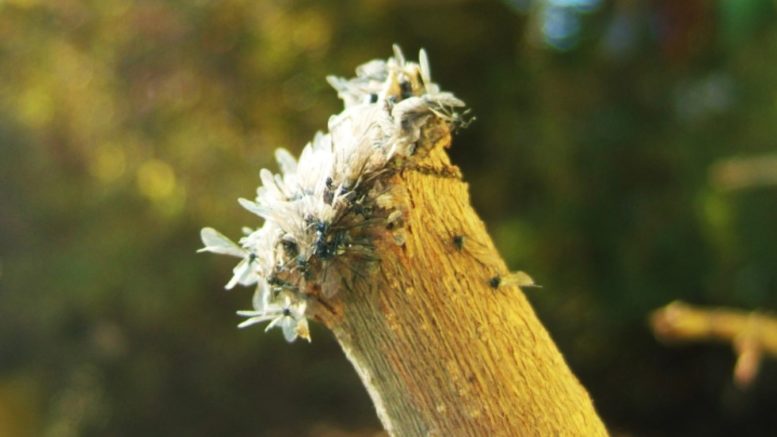By Moria Blazi
The winter is almost upon us, and most folks are busy preparing. During these few precious days of warm, sunlit hours amidst piercing blue skies and brilliantly colored leaves, the deer, squirrels and songbirds are also busy trying to prepare for the winter. So are the bugs.
This past summer, most of us noticed with irritation, the ubiquitous presence of those brown shield shaped Halyomorphahalys, better known as the Brown Marmorated Stink bug. They were everywhere; in your car, on your deck, in your yard, your shop, your garage and garden. Yes, everywhere. You may think they have gone away with the cooler weather, but they are busy right now sneaking into your warm house to ride it out till spring. These creatures are more likely to invade homes in the fall than others in their family.
They will enter through any opening big enough for them to squeeze through, around window and door frames, under siding, down chimneys etc., and they may even try to become active in the warmth of your home, flying around light fixtures.
As many of us know, these guys when smashed emit a pungent odor. They are also relative newcomers to our area, having moved steadily west from the east coast and the south, where they first appeared as stowaways on machinery and in packing crates from their native Asia, nearly 20 years ago.
First noticed in numbers in all major port cities, on all coasts about ten years ago, they quickly made themselves at home, able to feed on a variety of plants including apples, cherries, tomatoes, and beans. Females are capable of laying 400 eggs in their short lifetimes, but, under optimal conditions in warmer climes such as California and Georgia they can produce up to six generations per year. They don’t bite humans, and they wont do significant damage to your apples, cherries or tomatoes, but they are difficult to control, and, well, they stink.
Although the wasps, bees, and flies are mostly gone, you also may have noticed those clouds of white spots flying on these sunny fall days. These guys are Wooly Aphids, or Eriosomatinae. They, like the stink bugs, feed by sucking plant fluids, and they produce a filamentous waxy, white covering which makes them appear like tiny flying cotton balls. Known by names like “angel flies,” “fairy flies,” “snow bugs,” and “flying gnats,” they feed on apple, pear, ash, alder, oak and elm. They form mases on any cut branch. Also, harmless, they seem to be especially thriving this year.
Look to the trees in your yard, especially any recently pruned branches and you may see their colonies. They do very minimal damage, but can cause black sooty mold to grow on your trees. Luckily, they are easy to remove, so before you go killing them with pesticides, remember that they are food for birds and bats, and that they only fly in the warm sun. If you see them, enjoy the fleeting autumn sun, as you keep busy preparing for old man winter.
Woody Aphids collect on end of tree branch. Photo by Moira Blazi of The Montanian.

